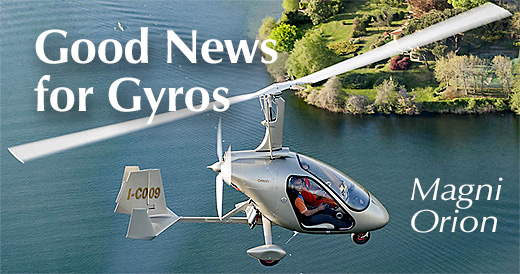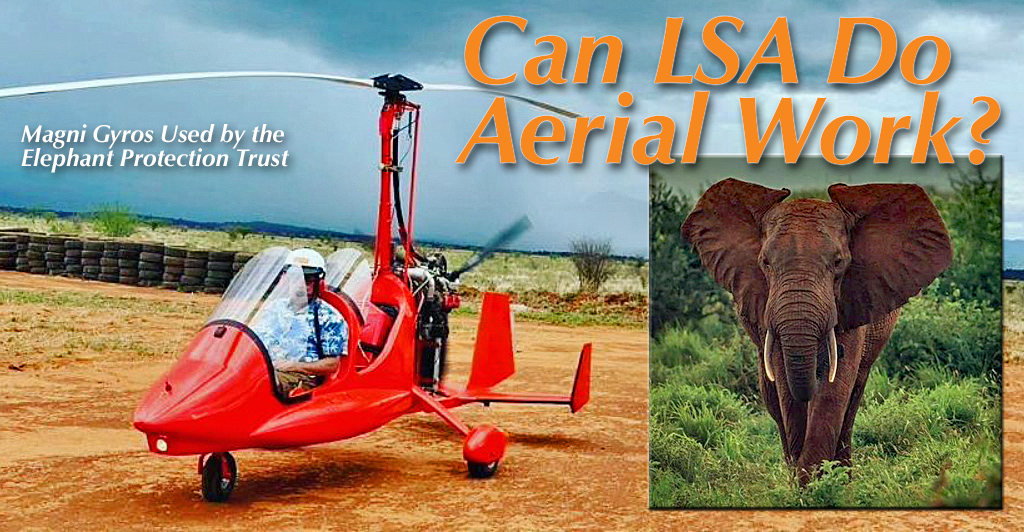
One of the brightest stars in the Mosaic regulatory constellation is allowing LSA to do “aerial work.” In today’s LSA, the only compensated activities Americans can perform are flight instruction and limited towing operations. Any more is prohibited by SP/LSA regulations. Why is this important? Since 2014, LAMA has explained that light aircraft could be used productively for many work missions, although the Association was careful to stress that it was not advocating for passenger or cargo hauling. Many other aerial working activities were demonstrated to FAA. Agency rule writers agreed and the opportunity is coming with Mosaic. Admittedly, the community does not yet have all the information needed on what pilot credentials will be required to use Mosaic LSA for aerial work, but as the agency weighs comments and discusses this internally, we hope Flight Standards (which manages such things) will remain as reasonable as the Aircraft Certification group. In this article I am pleased to observe one credible use of an LSA to do some serious aerial work.


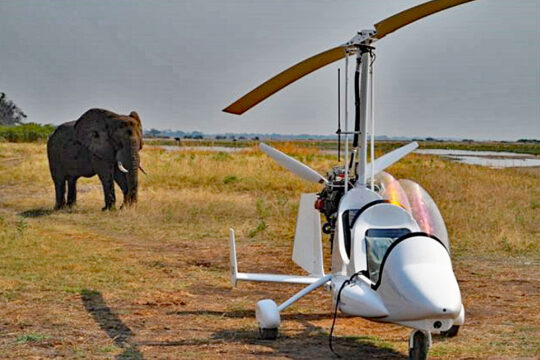 Since 2014, LAMA has explained that light aircraft could be used productively for many work missions, although the Association was careful to stress that it was not advocating for passenger or cargo hauling. Many other aerial working activities were demonstrated to FAA. Agency rule writers agreed and the opportunity is coming with Mosaic.
Admittedly, the community does not yet have all the information needed on what pilot credentials will be required to use Mosaic LSA for aerial work, but as the agency weighs comments and discusses this internally, we hope Flight Standards (which manages such things) will remain as reasonable as the Aircraft Certification group.
Since 2014, LAMA has explained that light aircraft could be used productively for many work missions, although the Association was careful to stress that it was not advocating for passenger or cargo hauling. Many other aerial working activities were demonstrated to FAA. Agency rule writers agreed and the opportunity is coming with Mosaic.
Admittedly, the community does not yet have all the information needed on what pilot credentials will be required to use Mosaic LSA for aerial work, but as the agency weighs comments and discusses this internally, we hope Flight Standards (which manages such things) will remain as reasonable as the Aircraft Certification group.
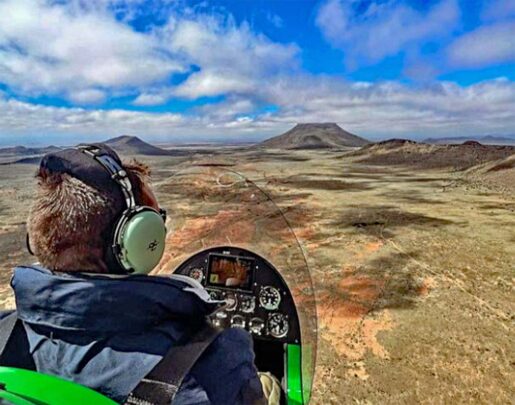 In this article I am pleased to observe one credible use of an LSA to do some serious aerial work. Fortunately, many other countries already recognize these flying machines can be useful. In this story, learn how the freedom to fly is helping Africa's wildlife thanks to gyroplane enthusiasts.
In this article I am pleased to observe one credible use of an LSA to do some serious aerial work. Fortunately, many other countries already recognize these flying machines can be useful. In this story, learn how the freedom to fly is helping Africa's wildlife thanks to gyroplane enthusiasts.
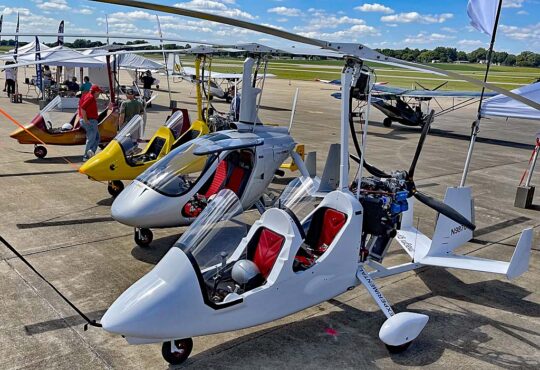
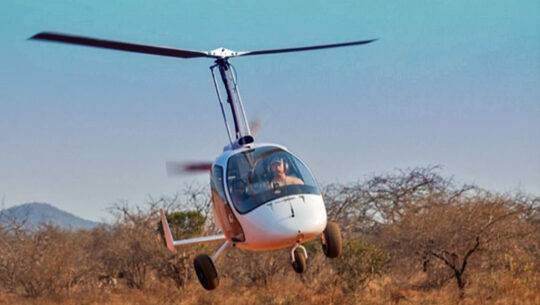
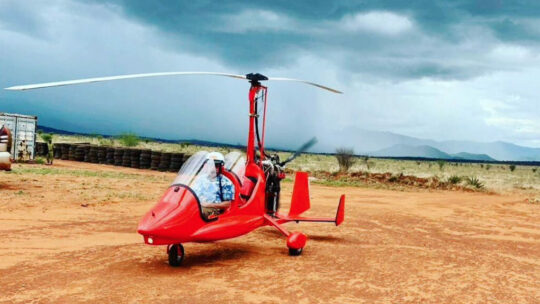 "As you know, flying gyros is a beautiful hobby shared by many people all over the world. For some people, however, this hobby has become an important job with a big role in the protection and defense of wildlife.
"A great example is given by our friend Keith Hellyer who dedicates his life to fight every day against poachers with his fleet of three M24 Orion gyros and one M22 Voyager in the Tsavo’s Kasigau corridor in Kenya. The aircraft are used to monitor elephant movements, acting as deterrent against poachers and pinpointing the presence of intruders so that ranger patrols on the ground can be directed towards them.
"The M24 Orion (side-by-side, enclosed) in particular has proven to be a valid ally in this important task, allowing rapid travel and immediate intervention.
"As you know, flying gyros is a beautiful hobby shared by many people all over the world. For some people, however, this hobby has become an important job with a big role in the protection and defense of wildlife.
"A great example is given by our friend Keith Hellyer who dedicates his life to fight every day against poachers with his fleet of three M24 Orion gyros and one M22 Voyager in the Tsavo’s Kasigau corridor in Kenya. The aircraft are used to monitor elephant movements, acting as deterrent against poachers and pinpointing the presence of intruders so that ranger patrols on the ground can be directed towards them.
"The M24 Orion (side-by-side, enclosed) in particular has proven to be a valid ally in this important task, allowing rapid travel and immediate intervention.
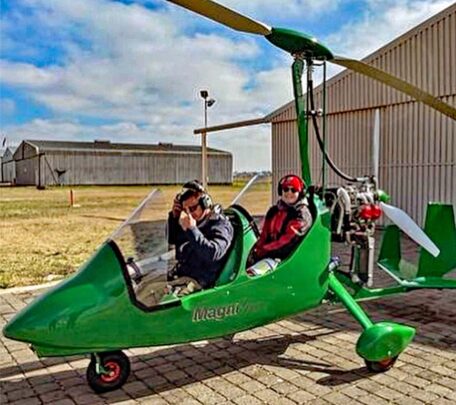 "Happily, this is not the longer the only example," MagniGyro continued.
"A new luxuriant green M16 Tandem Trainer (nearby image) was recently approved by the CAA and is aimed to be used to fly around in the Shamwari Game Resort, a 30,000 hectare game reserve situated in the heart of the Eastern Cape in South Africa.
"Here is the largest population of private free-roaming black and white rhino animals in South Africa.
"Safari Operation Manager Andrew Kearney is working hand-in-hand with instructor Caroline Zalewsky Blane to bring the gyro from Johannesburg to Port Elizabeth in an exciting two-day trip," said the Trust. "The new gyro will assist the rangers in supervising these fascinating animals during the regular surveillance of the reserve."
"Happily, this is not the longer the only example," MagniGyro continued.
"A new luxuriant green M16 Tandem Trainer (nearby image) was recently approved by the CAA and is aimed to be used to fly around in the Shamwari Game Resort, a 30,000 hectare game reserve situated in the heart of the Eastern Cape in South Africa.
"Here is the largest population of private free-roaming black and white rhino animals in South Africa.
"Safari Operation Manager Andrew Kearney is working hand-in-hand with instructor Caroline Zalewsky Blane to bring the gyro from Johannesburg to Port Elizabeth in an exciting two-day trip," said the Trust. "The new gyro will assist the rangers in supervising these fascinating animals during the regular surveillance of the reserve."
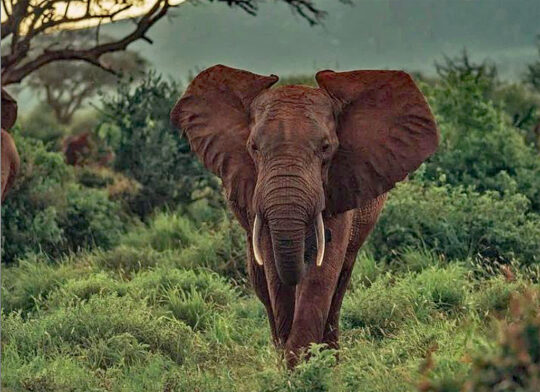 Appreciation Expressed:
Appreciation Expressed: 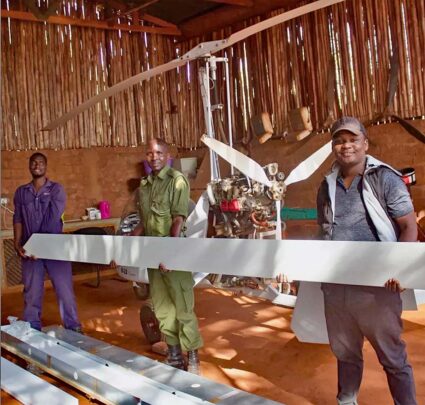 "A big thank you to Magnigyro for their continued partnership, and keeping our gyrocopters durable and safe," expressed the Trust. "We recently received two sets of rotor blades (nearby image) that will ensure our gyrocopters are well suited for a multitude of tasks."
"A big thank you to Magnigyro for their continued partnership, and keeping our gyrocopters durable and safe," expressed the Trust. "We recently received two sets of rotor blades (nearby image) that will ensure our gyrocopters are well suited for a multitude of tasks."
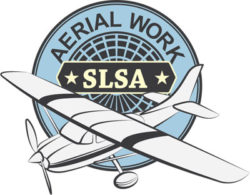 Aerial work is helpful because a manufacturer that can sell some units for a commercial purpose may sell these work machines at a higher profit margin. In turn, this should strengthen their business, helping to ensure they can continue to provide parts and service for the airplane you bought from them.
Healthier businesses can support their customers better. That alone makes the effort worthwhile. These aircraft perform useful activities while consuming less fuel and making less noise, bringing further benefits to the idea of aerial work.
Aerial work is helpful because a manufacturer that can sell some units for a commercial purpose may sell these work machines at a higher profit margin. In turn, this should strengthen their business, helping to ensure they can continue to provide parts and service for the airplane you bought from them.
Healthier businesses can support their customers better. That alone makes the effort worthwhile. These aircraft perform useful activities while consuming less fuel and making less noise, bringing further benefits to the idea of aerial work.

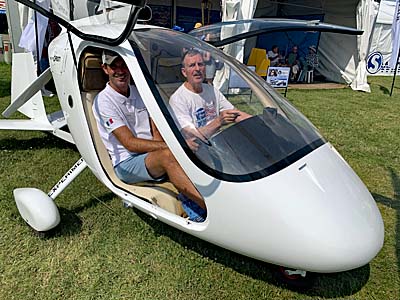 How well is the category doing in other parts of the world? The answer draws on reports from dominant engine producer, Rotax Aircraft Engines, which has reported for years that the class of aircraft buying the most engines has been gyroplanes. Considering the many fixed wing designs also use that engine brand, Rotax's statement carries tremendous weight.
The story about why gyroplanes were denied the full privileges of Special LSA — and therefore have to be built as Experimental Amateur Built (EAB) kits in America — is a long, sad story …but it is one that appears to be ending, thank goodness!
As described in this
How well is the category doing in other parts of the world? The answer draws on reports from dominant engine producer, Rotax Aircraft Engines, which has reported for years that the class of aircraft buying the most engines has been gyroplanes. Considering the many fixed wing designs also use that engine brand, Rotax's statement carries tremendous weight.
The story about why gyroplanes were denied the full privileges of Special LSA — and therefore have to be built as Experimental Amateur Built (EAB) kits in America — is a long, sad story …but it is one that appears to be ending, thank goodness!
As described in this 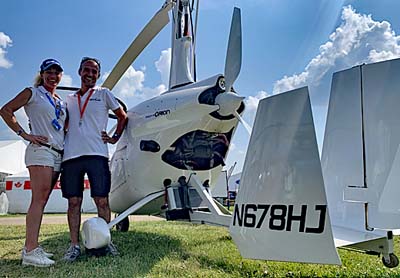
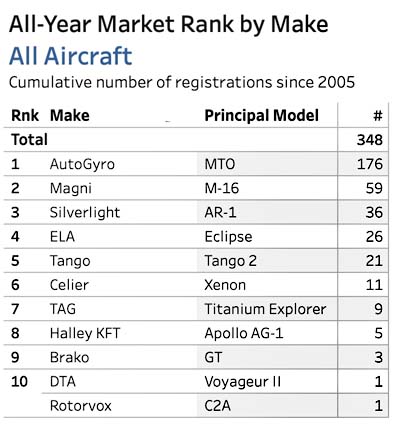 Orion's instrument panel is equipped with rotor revolution counter, altimeter, air-speed indicator, vertical compass, a digital engine monitoring system, and fuel level gauge. Additional, optional instrumentation can be added as desired.
For controls, Orion offers full dual joystick and pedals for each occupant. Standard equipment includes electric trim.
M24 Orion is attractive and roomy inside. For carriage, Orion is equipped with three easily-accessed baggage compartments. Its cabin heating system combined with full enclosure allows M24 to remain comfortable even on cold winter days.
From either seat the view is enormous, a key benefit of gyroplanes without nearby wing structure to block your view. Orion would definitely be more comfortable for long flights or in chilly weather but the open cockpit M16 Trainer or M22 Voyager models deliver an even more expansive view.
Combined with a gyroplane's unique handling and performance, these machines make wonderful viewing platforms.
Orion's instrument panel is equipped with rotor revolution counter, altimeter, air-speed indicator, vertical compass, a digital engine monitoring system, and fuel level gauge. Additional, optional instrumentation can be added as desired.
For controls, Orion offers full dual joystick and pedals for each occupant. Standard equipment includes electric trim.
M24 Orion is attractive and roomy inside. For carriage, Orion is equipped with three easily-accessed baggage compartments. Its cabin heating system combined with full enclosure allows M24 to remain comfortable even on cold winter days.
From either seat the view is enormous, a key benefit of gyroplanes without nearby wing structure to block your view. Orion would definitely be more comfortable for long flights or in chilly weather but the open cockpit M16 Trainer or M22 Voyager models deliver an even more expansive view.
Combined with a gyroplane's unique handling and performance, these machines make wonderful viewing platforms.
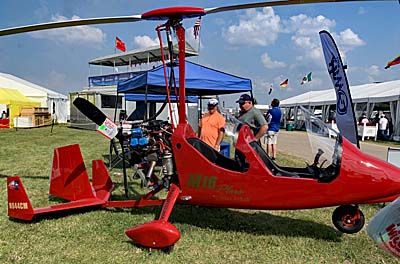 "An innovative and avant-garde choice," Magni said, "[915iS] brings to the whole range a considerable increase in cruising and climbing performance, with fuel consumption comparable to the Rotax 914."
One of Magni's American customers, identified only as M.B., wrote the company to say, “As the proud owner of the first Magni M16 Plus in the USA, I can tell you the performance is like none other. Takeoff, climb and speed performance exceeded my expectations. This gyroplane has incredible power reserve, more than enough for every aspect of flight. Takeoffs are breathtaking, cruise is smooth and landings are gentle. The Magni M16 Plus is an incredible flying machine!”
One final comment of worthy note: In late 2016, the Magni Gyro factory in Besnate, Italy produced the company’s 1,000th gyroplane.
See lots of video experiences in Magni gyros at
"An innovative and avant-garde choice," Magni said, "[915iS] brings to the whole range a considerable increase in cruising and climbing performance, with fuel consumption comparable to the Rotax 914."
One of Magni's American customers, identified only as M.B., wrote the company to say, “As the proud owner of the first Magni M16 Plus in the USA, I can tell you the performance is like none other. Takeoff, climb and speed performance exceeded my expectations. This gyroplane has incredible power reserve, more than enough for every aspect of flight. Takeoffs are breathtaking, cruise is smooth and landings are gentle. The Magni M16 Plus is an incredible flying machine!”
One final comment of worthy note: In late 2016, the Magni Gyro factory in Besnate, Italy produced the company’s 1,000th gyroplane.
See lots of video experiences in Magni gyros at 